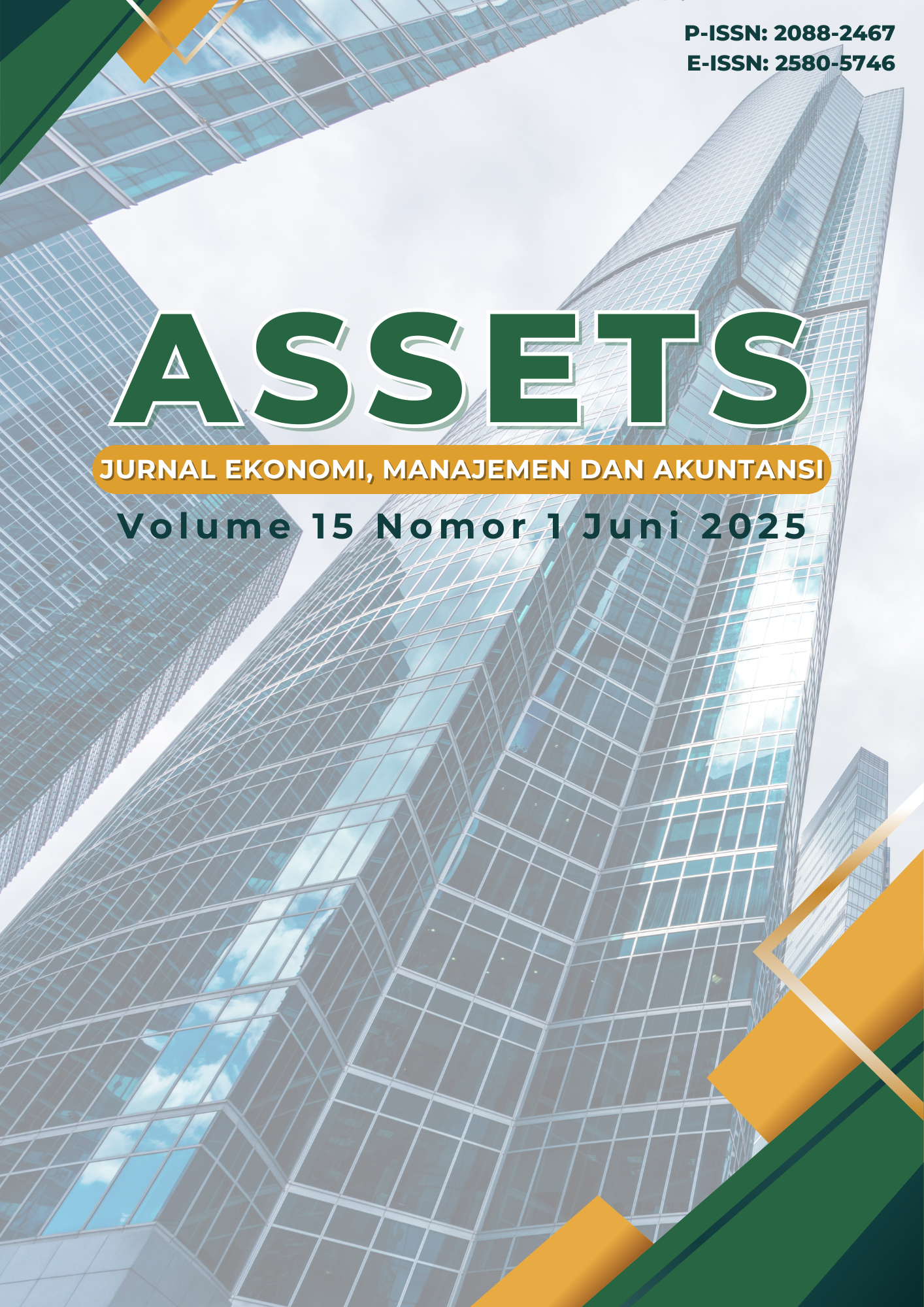THE EFFECT OF ROLE STRESS AND JOB RESOURCES ON EMOTIONAL EXHAUSTION WITH WORK-FAMILY CONFLICT MEDIATION AMONG HIGHER EDUCATIONAL STAFF
DOI:
https://doi.org/10.24252/assets.v15i1.57266Keywords:
Role stress, Job resources, Emotional exhaustion, Work-family conflict, Higher educationAbstract
This study investigates how role stress and job resources affect emotional exhaustion among university staff, with work-family conflict as a mediator. Using a quantitative causal design, data was collected via 5-point Likert scale questionnaires from 200 employees at XYZ University (from a population of 1,944), including civil servants, permanent staff, and contract workers. SEM-PLS analysis (SmartPLS 3) yielded key findings, role stress significantly increases emotional exhaustion, job resources reduce exhaustion, but not significantly, work-family conflict significantly worsens exhaustion, role stress directly heightens work-family conflict, Job resources weakly reduce work-family conflict (insignificant), Work-family conflict mediates role stress's impact on exhaustion, No significant mediation occurred between job resources and exhaustion. The results highlight that while workplace pressures strongly contribute to burnout, existing support systems fail to sufficiently mitigate stress. This suggests XYZ University should redesign workloads to reduce role ambiguity, strengthen institutional support mechanisms, implement work-life balance policies. The study provides empirical evidence on stress dynamics in higher education, though future research should expand sampling for broader applicability.
References
Akdemir. (2019). The Effect of Teacher Burnout on Organizational Commitment in Turkish Contect. Journal of Education and Training Studies, 171.
Amalia. (2022). Analisis Dampak Stres Kerja. Kewarganegaraan, 5409-5415.
Amalia, Wahdiniawati,, & Subroto,. (2022).). Analisis Dampak Stres Kerja Dan Work Family Conflict Terhadap Komitmen Organisasi (Studi Kasus Guru Wanita Selama Pandemi). Jurnal Kewarganegaraan, 5409–5415.
Bakker, & de Vries, J. D. (2021, 10 08). https://doi.org. Diambil kembali dari https://doi.org: https://doi.org/10.1080/10615806.2020.1797695
Bakker, & Demerouti. (2017). Journal of Occupational Health Psychology, 273–285.
Bakker, & Demerouti,. (2017). Job demands–resources theory: taking stock and looking forward. Journal of Occupational Health Psychology, 273–285.
Carvalho, & Chambel. (2018). Work–family conflict and enrichment mediates the relationship between job characteristics and well-being at work with Portuguese marine corps. Armed Forces & Society, 301-321.
Dewinta, I., & Dwirandra, A. (2019). Extrovert personality moderates the effect of role stressors elements on burnout in tax consultant office. South East Asia Journal of Contemporary Business, Economics and Law, 5.
Farrdinna. (2019). The Concequences of work family conflict, burnout and organizational commitment among women. Jakarta: Jakarta Media.
Fibriyanti. (2019). Role Stress berpengaruh terhadap Emotional Exhasution Pegawai RSUD Surabaya. Surabaya: Sawarna.
Fincham, J. E. (2008). Response Rates and Responsiveness for Surveys, Standards, and the Journal. American Journal of Pharmaceutical Education 2008, 1-3.
Firdaus. (2021). Peran ob Burnout, Kepuasan Kerja dan Job resource pada pengaruh job demand terhadap kinerja karyawan. 2021: Jakpubl.
Frank, & Kodikal. (2017). Role stress study: An effective tool for employee engagement. International Journal of Management and Social Sciences Research, 8.
Gabriel, & Aguinis,. (2022). How to prevent and combat employee burnout and create healthier workplaces during crises and beyond. Business Horizons. Jakarta: Business Horizons.
Ghozali. (2015). Konsep, Teknik, Aplikasi Menggunakan Smart PLS 3.0 Untuk Penelitian Empiris. Semarang: BP UNDIP.
Hair. (2017). A Primer on Partial Least Squares Structural Equation Modeling (PLS-SEM). New York: Thousand Oaks.
Huang. (2020). 2020. Work hours and difficulty in leaving work on time in relation to work-to family conflict, 605.
Jack E. Fincham, P. (2008). Response Rates and Responsiveness for Surveys, Standards, and the Journal. American Journal of Pharmaceutical Education , 1-3.
Jayarathna. (2021). The impact of job demands and job resources on work family conflict: Mediating effect of emotional exhaustion and moderating effect of job demands and job resources a conceptual framework for research. Kelaniya Journal of Management, 71.
Kementerian Pendidikan dan Kebudayaan. (2014). Peraturan no 88 tahun 2014. Jakarta: Kementerian Pendidikan dan Kebudayaan.
Khan. (2020). Efek Mediasi Burnout pada Konflik Dan Organisasi Komitmen. Jakarta: Jakarta Media.
Khan, Sufyan, & Malik. (2020). Mediating Effect of Burnout on the relationship between Work-Family Conflict and Organizational Commitment. Jakarta: JakPubl.
Kumar. (2018, 02 30). Preventing and managing burnout: What have we learned? Biomedical Journal of Scientific & Technical Research, 2. Diambil kembali dari https://doi.org/10.26717/BJSTR.2018.02.000703: https://doi.org/10.26717/BJSTR.2018.02.000703
(2023). Laporan Kinerja Perguruan Tinggi XYZ. Jakarta: Perguruan Tinggi XYZ.
Listiara, d. S., & Setyawan. (2018). Hubungan antara persepsi mengenai status perguruan tinggi negeri badan hukum dengan kesiapan untuk berubah pada tenaga kependidikan universitas diponegoro. Jurnal Empati, 6(4), 6-10.
Mark, & Smith. (2018). A qualitative study of stress in university staff. Advances in Social Sciences Research Journal,, 2.
Martin. (2013). Work/family conflict as a predictor of employee work engagement of extension. Jakarta: Doctor of Philosophy Degree of The University of Tennesse Knoxville.
Downloads
Published
How to Cite
Issue
Section
License

This work is licensed under a Creative Commons Attribution-NonCommercial-ShareAlike 4.0 International License.



























